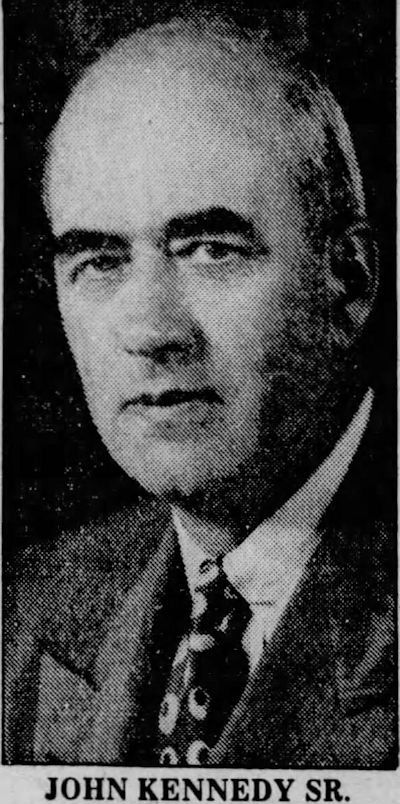 John Kennedy Sr. was born in Scotland in 1891. His family surname originally was “Cinneidigh.” He was proud of his heritage and displayed the Kennedy clan kilt and coat of arms long after he came to America.
John Kennedy Sr. was born in Scotland in 1891. His family surname originally was “Cinneidigh.” He was proud of his heritage and displayed the Kennedy clan kilt and coat of arms long after he came to America.
That was in 1907. Bankruptcy had forced his family to emigrate.
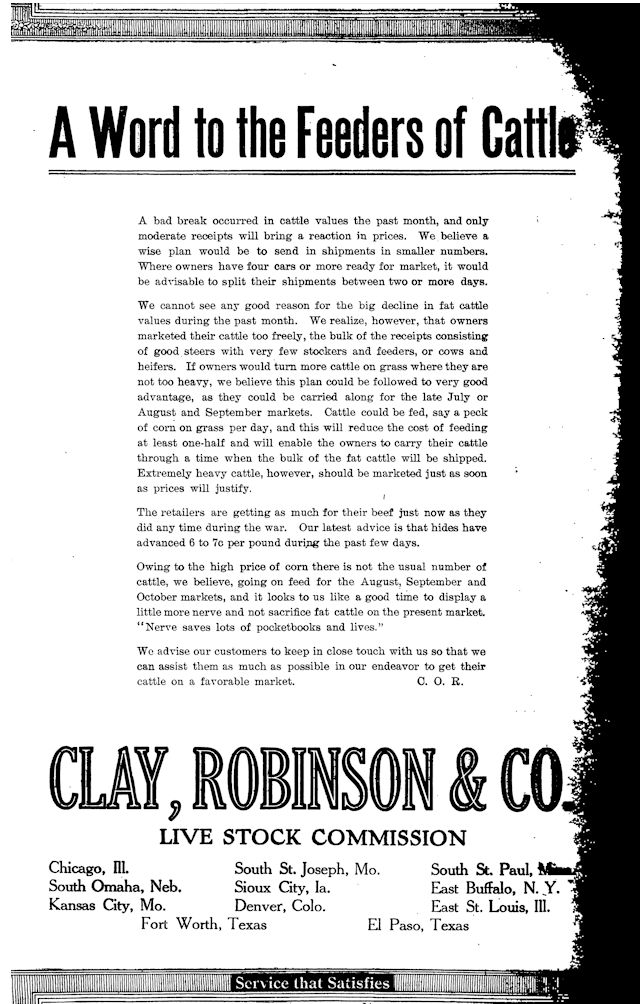 Young Kennedy got a job in Chicago rounding up cattle on horseback in the stockyards for the Clay, Robinson Company, a cattle commission that financed cattle buyers north and south of El Paso.
Young Kennedy got a job in Chicago rounding up cattle on horseback in the stockyards for the Clay, Robinson Company, a cattle commission that financed cattle buyers north and south of El Paso.
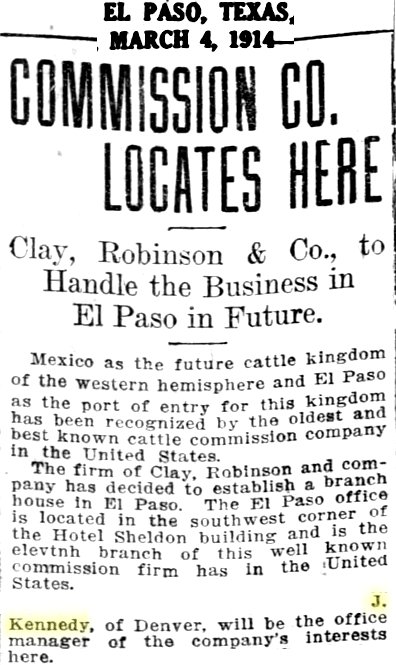 After training in Chicago and Denver, Kennedy was transferred to El Paso, where he experienced the waning era of the cowboy.
After training in Chicago and Denver, Kennedy was transferred to El Paso, where he experienced the waning era of the cowboy.
His job was to make arrangements to buy cattle in the northern part of Mexico for his company’s clients.
“Our company got the cattle, then loaned money to our clients who would buy the cattle,” he told the Star-Telegram in 1963.
Kennedy’s job was complicated by the fact that Mexican revolutionary Pancho Villa controlled northern Mexico at the time. Kennedy accompanied six-gun-toting men on horseback into Mexico on several trips to make arrangements for buy cattle and rode along on cattle drives north to the U.S. border.
Kennedy recalled that because his Scottish accent was still strong, “I was treated as a Britisher by the Mexicans.”
Kennedy didn’t complain, he said, because the Mexicans treated Europeans much better than they did Americans.
Villa required foreigners had to pay him a “fiscal duty” before they could take cattle out of Mexico, and Kennedy often had to go to Juarez to pay the duty.
“I only saw Villa one time,” Kennedy recalled, but Kennedy said he often did business with a brother of Villa.
Kennedy remembered Pancho Villa as “an overbearing man.”
In 1915 the Clay, Robinson Company transferred Kennedy to Fort Worth to manage the branch office here.
 After World War I began and Kennedy registered for the draft, he listed himself as a British subject and manager of Clay, Robinson’s Fort Worth branch.
After World War I began and Kennedy registered for the draft, he listed himself as a British subject and manager of Clay, Robinson’s Fort Worth branch.
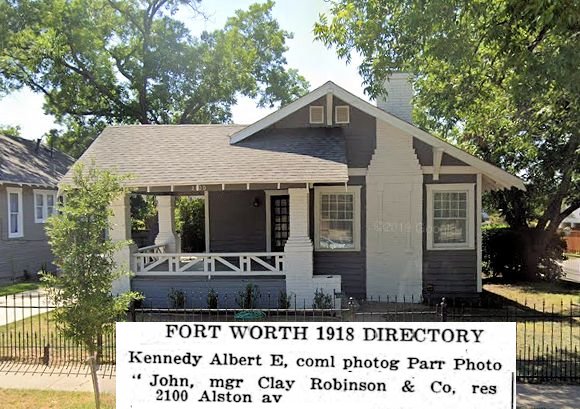 In 1918 Kennedy was living in this house in Fairmount.
In 1918 Kennedy was living in this house in Fairmount.
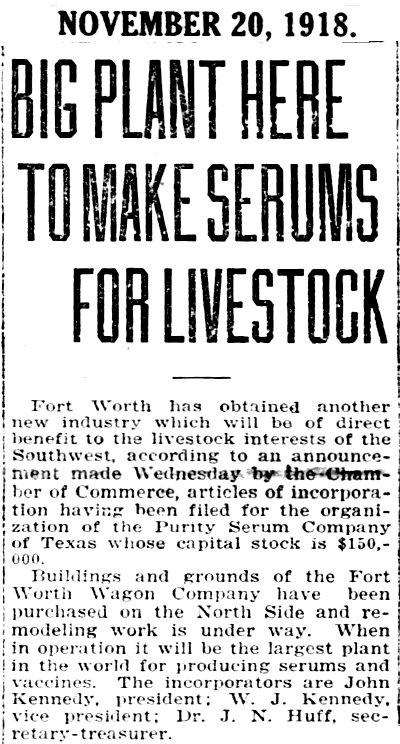 But later in 1918 Kennedy began a second career. He was one of three incorporators of the Purity Serum Company. The three men bought the Fort Worth Wagon Company factory on ten acres in Fostepco Heights (Diamond Hill) and adapted it to manufacture animal vaccines, disinfectants, and insecticides.
But later in 1918 Kennedy began a second career. He was one of three incorporators of the Purity Serum Company. The three men bought the Fort Worth Wagon Company factory on ten acres in Fostepco Heights (Diamond Hill) and adapted it to manufacture animal vaccines, disinfectants, and insecticides.
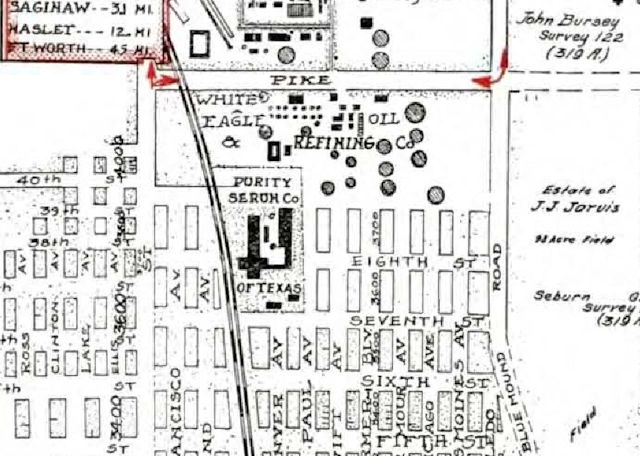 Cowtown, with its packing plants and stockyards, was a perfect location for a livestock vaccine company.
Cowtown, with its packing plants and stockyards, was a perfect location for a livestock vaccine company.
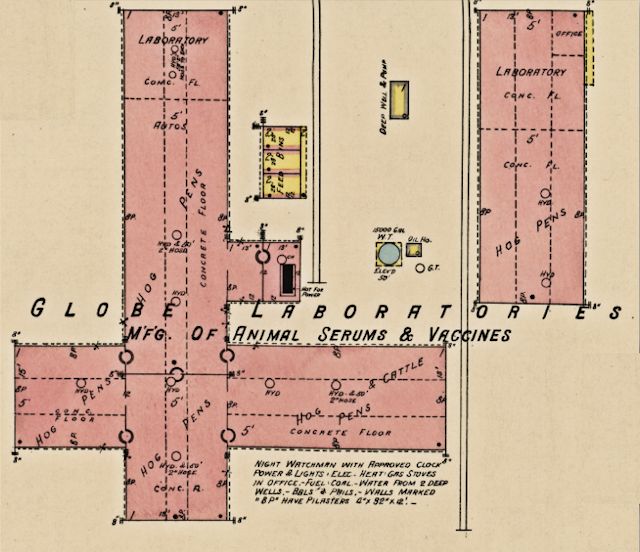
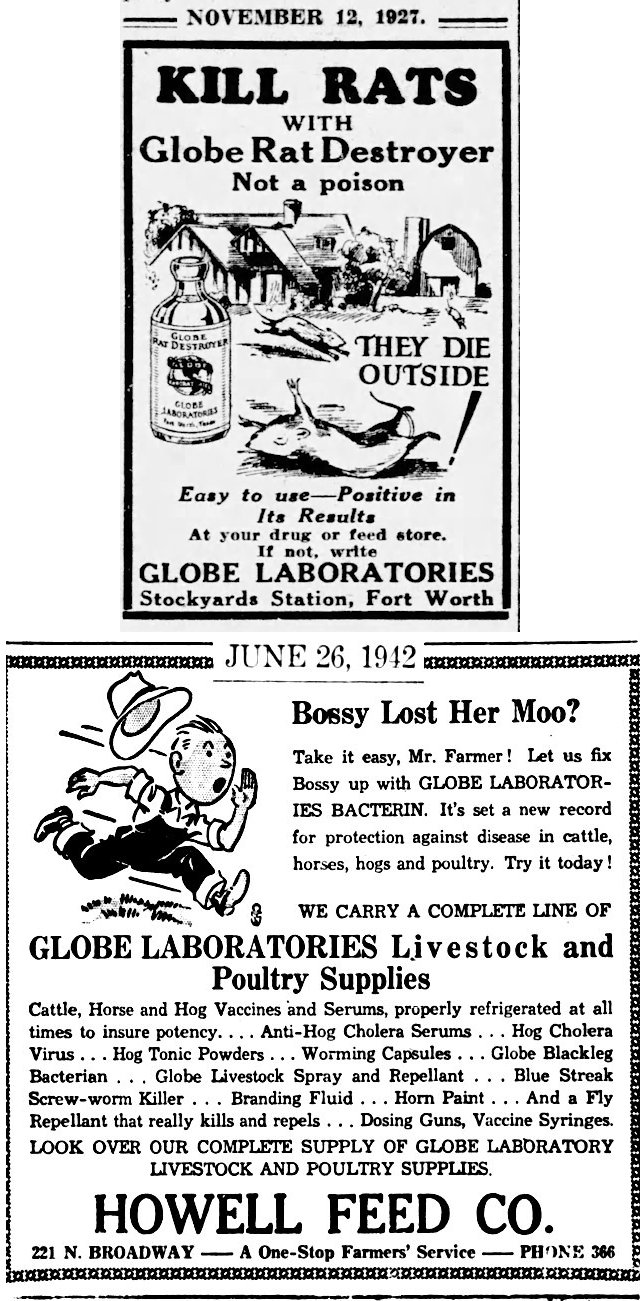 The company was soon renamed “Globe Laboratories.” It served the local livestock industry, and its products were stocked by drugstores and feedstores nationwide.
The company was soon renamed “Globe Laboratories.” It served the local livestock industry, and its products were stocked by drugstores and feedstores nationwide.
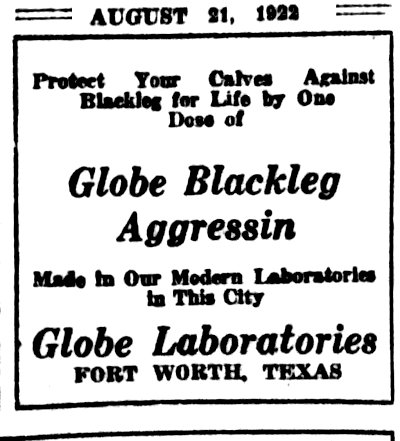 Two of Globe’s most important products were serums for the diseases hog cholera and blackleg. Blackleg often was fatal in calves.
Two of Globe’s most important products were serums for the diseases hog cholera and blackleg. Blackleg often was fatal in calves.
Kennedy recalled, “We were able to sell all of the blackleg vaccine we could make to ranchers south and west of here.”
 In 1923 Kennedy became a naturalized U.S. citizen, swearing that he would “renounce absolutely and forever all allegiance and fidelity . . . to George V, king of Great Britain & Ireland.”
In 1923 Kennedy became a naturalized U.S. citizen, swearing that he would “renounce absolutely and forever all allegiance and fidelity . . . to George V, king of Great Britain & Ireland.”
By 1930 Globe Laboratories had sold so much blackleg vaccine that when Kennedy sold his interest in the company he became a millionaire. He retired.
But he didn’t stay retired long.
Now Kennedy had the time and money to pursue another passion: horses.
Kennedy had been a horse fancier since his youth in Scotland. His father had raised Clydesdales.
In 1933 Kennedy bought four hundred acres on Blue Mound Road north of town and developed a horse farm.
He built a grand house of sandstone veneer. He designed it to resemble a Scottish baronial mansion.
It became a gathering place for the likes of Amon Carter, W. T. Waggoner, Will Rogers, Paul Whiteman, Gene Autry.
He also built a large stable of stone veneer in which to keep the purebred horses that he bred and showed: saddle horses, road horses, and hackneys. A hackney is a horse or pony of a light breed with a high-stepping trot. A hackney (hack) also is a horse-drawn vehicle, as for hire.
Kennedy showed his horses throughout America and Europe.
 Kennedy, his wife, and later his son were perennial winners in horse competitions at the Fort Worth stock show.
Kennedy, his wife, and later his son were perennial winners in horse competitions at the Fort Worth stock show.
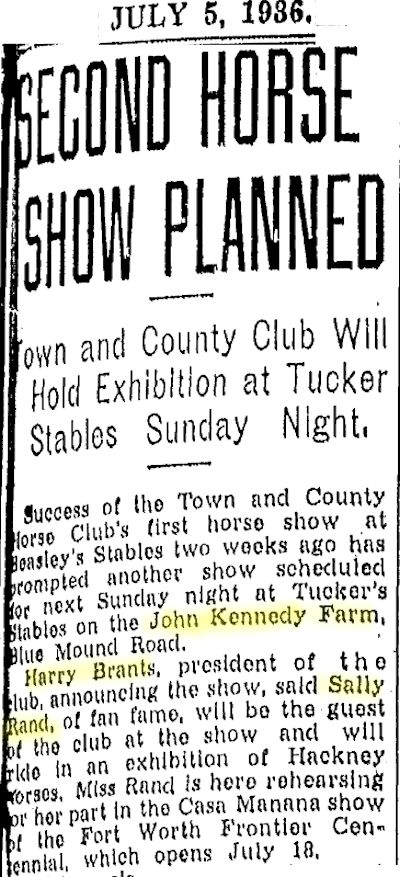 Kennedy was a member of the Town and County Horse Club. President was Harry Brants, whom we will meet again.
Kennedy was a member of the Town and County Horse Club. President was Harry Brants, whom we will meet again.
Note that Sally Rand, “of fan fame,” who was in town in 1936 to star in the Frontier Centennial, would take part in a horse show at Kennedy’s farm.
Meanwhile, in 1935 aviation entrepreneur F. C. Merrill and oilman Frank Bennett had formed the Bennett Aircraft Corporation of Delaware to produce the BTC-1, which was Merrill’s twin-engine, eight-place monoplane. The BTC-1 prototype had two unusual features: It had retractable landing gear (rare in a plane that small), and it was very lightweight. The plane was lightweight because its frame was made of Duraloid—plywood impregnated with Bakelite resin. (Howard Hughes would use a similar material in his Spruce Goose.) Merrill and Bennett hoped that the light weight would lower manufacturing costs and allow the BTC-1 to fly at competitive speeds with less power.
In 1937 Bennett and Merrill began a tour of the country to find a city in which to build the BTC-1.
That brought them to Fort Worth. Here Bennett and Merrill met William Fuller, the city’s airport manager and aviation director. Fuller knew that John Kennedy had retired from Globe Laboratories and was looking for a new venture. Fuller steered Bennett and Merrill toward Kennedy.
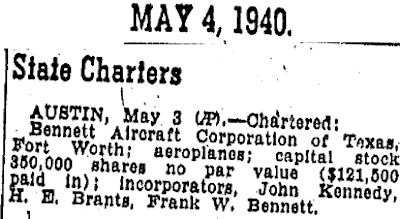 In 1940 Kennedy and Bennett and Harry Brants (of Kennedy’s horse club) incorporated Bennett Aircraft Corporation of Texas.
In 1940 Kennedy and Bennett and Harry Brants (of Kennedy’s horse club) incorporated Bennett Aircraft Corporation of Texas.
And thus did John Kennedy Sr. began his next career.
Son John Clay Kennedy Jr. told the Star-Telegram in 1983: “He seemed to get after something and then conquer it, and then he would lay around for a while and enjoy the spoils, and then he’d get after something else.”
Kennedy converted his stable into an aircraft assembly building. In addition he built a 44-by-294-foot assembly building. It structural system was designed by Wyatt C. Hedrick.
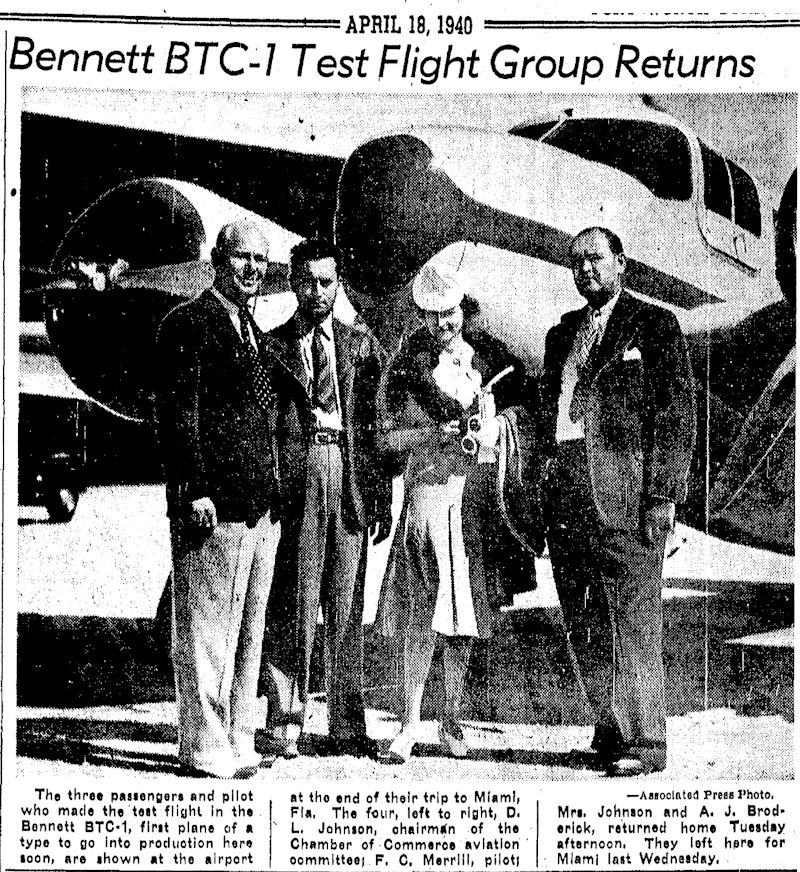 F. C. Merrill piloted the BTC-1 prototype on a test flight to Miami in 1940.
F. C. Merrill piloted the BTC-1 prototype on a test flight to Miami in 1940.
But the aircraft company received few orders for the BTC-1. The aviation industry was married to metal and wary of Duraloid, whatever the heck that was.
As a result the company soon went bankrupt. Kennedy as the major shareholder took over and renamed the company “Globe Aircraft Company.”
Kennedy abandoned the BTC-1 and for his first product turned to R. S. “Pop” Johnson, a pilot and inventor whom Kennedy had met at Meacham Field.
Johnson had designed a single-engine plane with a wooden frame and retractable landing gear. Kennedy hired engineer and aircraft designer K. H. “Bud” Knox as production chief. Knox revised Johnson’s design, giving the airplane an all-metal structure.
Kennedy named his company’s first airplane “Globe GC-1 Swift.”
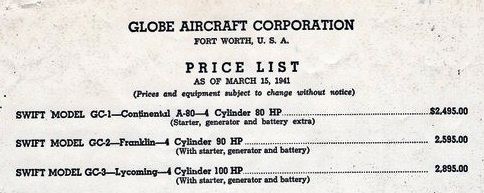 As Globe Aircraft prepared to begin production of the Swift in 1941, Kennedy advertised prices ($44,000 to $51,000 today).
As Globe Aircraft prepared to begin production of the Swift in 1941, Kennedy advertised prices ($44,000 to $51,000 today).
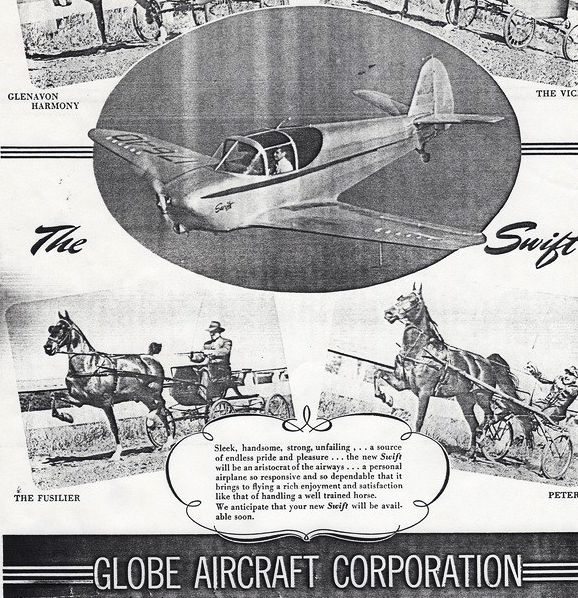 Kennedy even found a way to feature his prize-winning horses in an ad for the Swift. The Globe Swift, the ad promised, was an “aristocrat of the airways” that “brings to flying rich enjoyment and satisfaction like that of handling a well trained horse.”
Kennedy even found a way to feature his prize-winning horses in an ad for the Swift. The Globe Swift, the ad promised, was an “aristocrat of the airways” that “brings to flying rich enjoyment and satisfaction like that of handling a well trained horse.”
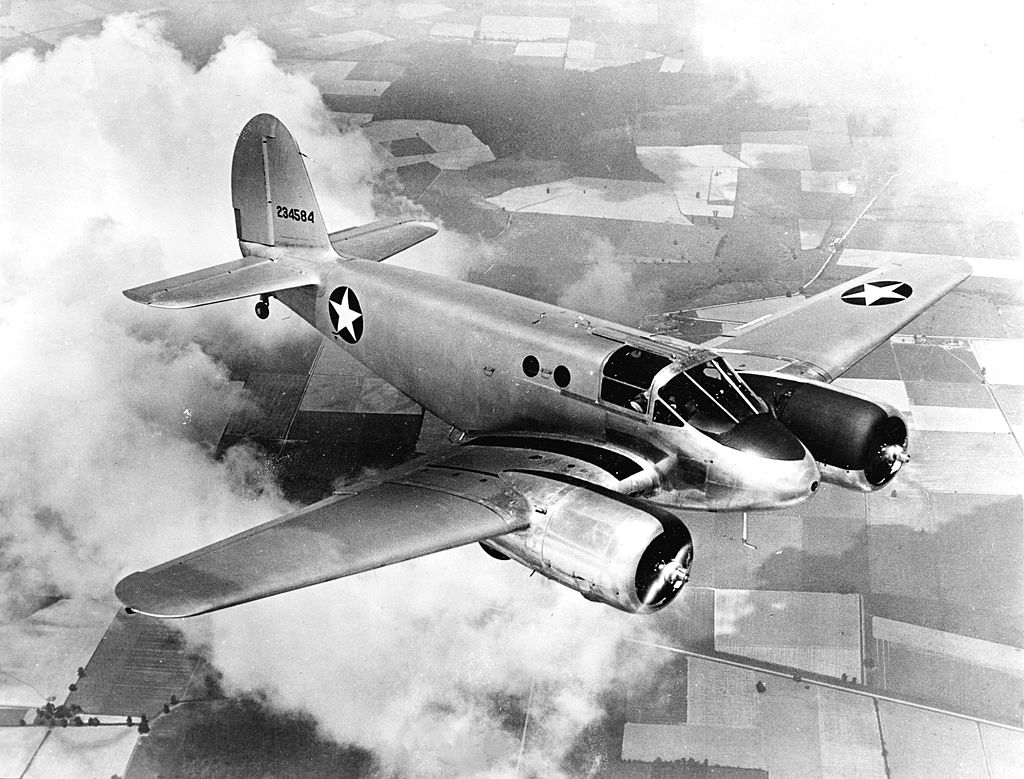 But when America entered World War II Globe put the Swift on the shelf and secured a large subcontract with Beechcraft Aircraft Corporation to manufacture six hundred Beechcraft AT-10 twin-engine training planes for the Army. (Photo from Wikipedia.)
But when America entered World War II Globe put the Swift on the shelf and secured a large subcontract with Beechcraft Aircraft Corporation to manufacture six hundred Beechcraft AT-10 twin-engine training planes for the Army. (Photo from Wikipedia.)
During the war Globe also built components for the Curtiss C-46 Commando, a twin-engine transport.
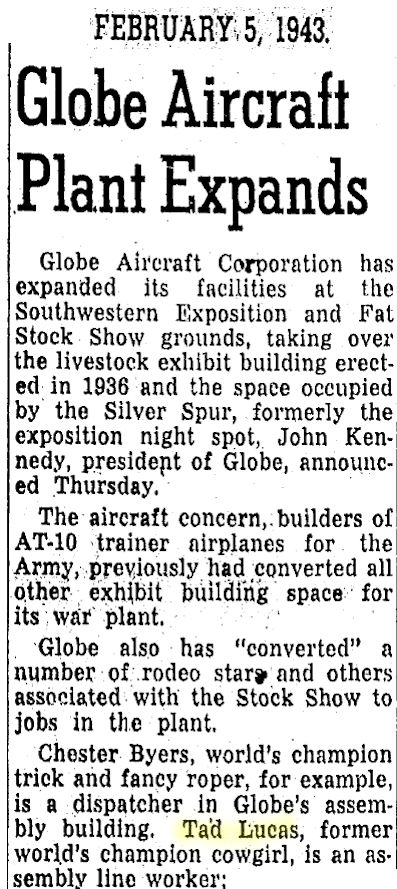 In 1943 Kennedy needed more assembly space to build AT-10s. He took over the three-acre cattle exhibit building behind North Side Coliseum. The stock show and rodeo were held on the North Side until 1944. (The cattle exhibit building would later house Clark’s Discount Store and Billy Bob’s Texas.)
In 1943 Kennedy needed more assembly space to build AT-10s. He took over the three-acre cattle exhibit building behind North Side Coliseum. The stock show and rodeo were held on the North Side until 1944. (The cattle exhibit building would later house Clark’s Discount Store and Billy Bob’s Texas.)
Kennedy even hired some of the rodeo performers, such as Tad Lucas.
Globe Aircraft at its peak employed two thousand people. But after the AT-10 contract expired, Kennedy was back to his original product: the Swift.
In 1946 Globe resumed production of the Swift and sold about four hundred. But that was not enough, and Globe Aircraft was forced into bankruptcy in 1947.
In 1951 Lawrence Dale Bell (see Part 2) would buy the Globe plant to house his new Bell Helicopter Company. Bell soon built a new plant in Hurst but continued to use the Globe plant into the 1970s.
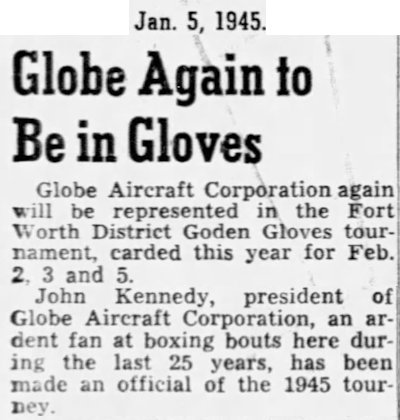 John Kennedy had two other interests. These two interests were different but not mutually exclusive: boxing and politics.
John Kennedy had two other interests. These two interests were different but not mutually exclusive: boxing and politics.
Kennedy’s son John Jr. said his father had been an amateur middleweight champion for six years. Kennedy senior continued to support the sport here in Golden Gloves and encouraged his Globe Aircraft employees to participate.
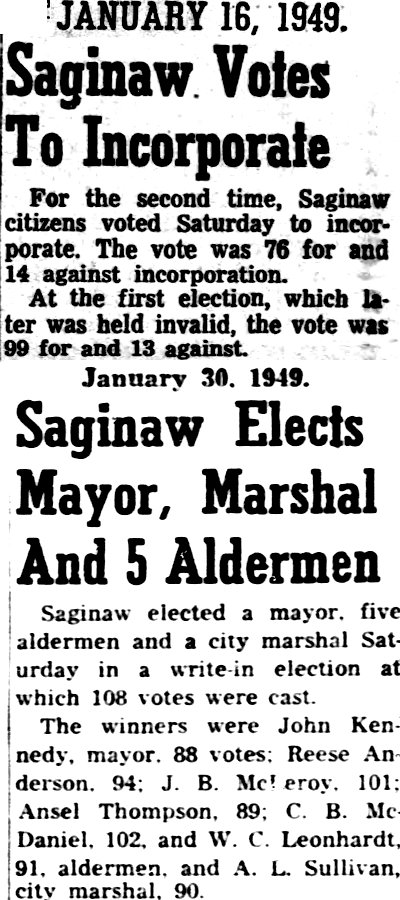 And when Saginaw incorporated in 1949 Kennedy was elected its first mayor and was instrumental in the new city establishing its government and infrastructure. In 1953 when Kennedy ran for re-election against Marvin Greene the vote was a tie: eighty-three votes each. Kennedy lost the runoff election by six votes.
And when Saginaw incorporated in 1949 Kennedy was elected its first mayor and was instrumental in the new city establishing its government and infrastructure. In 1953 when Kennedy ran for re-election against Marvin Greene the vote was a tie: eighty-three votes each. Kennedy lost the runoff election by six votes.
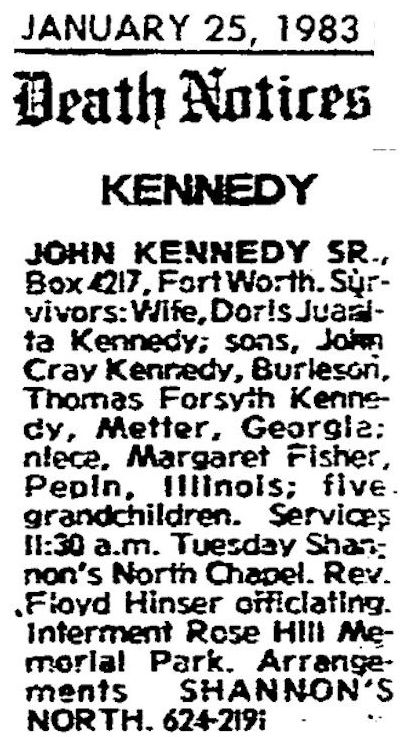 John Kennedy Sr. died in 1983.
John Kennedy Sr. died in 1983.
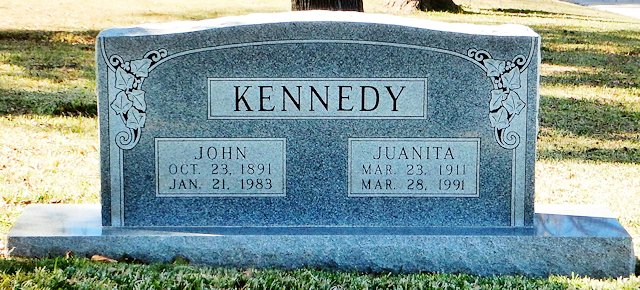 He is buried in Rose Hill Cemetery.
He is buried in Rose Hill Cemetery.
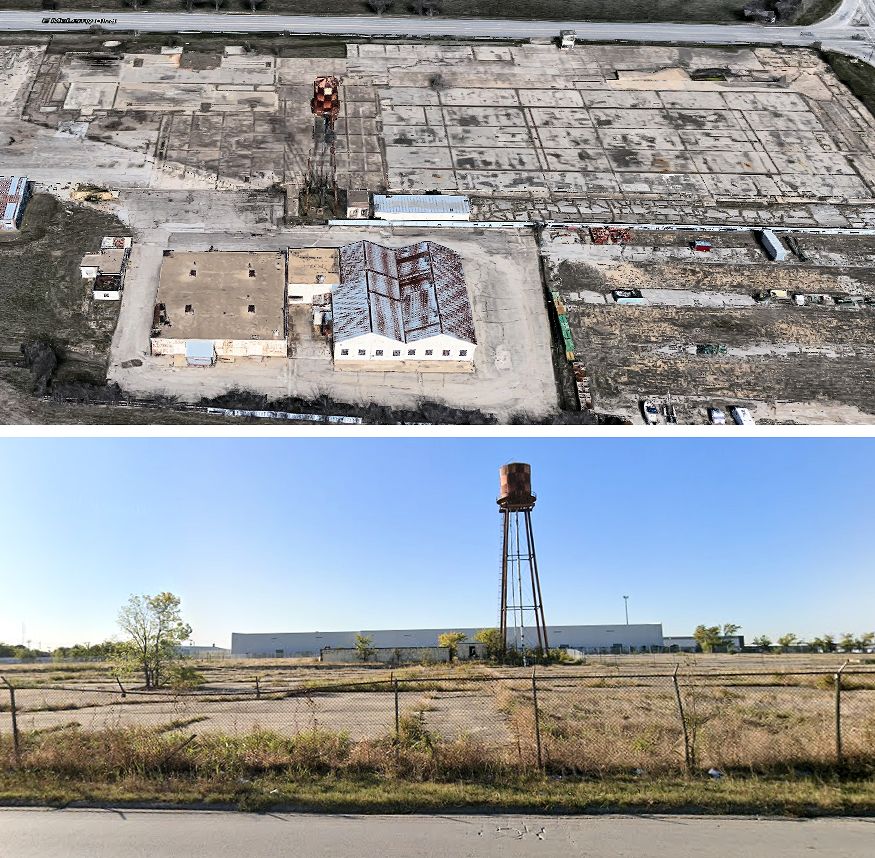 Today the farm where John Kennedy bred and trained his prize-winning show horses is a vacant field. His grand house and stable were demolished in 1990. So was his shrine: a building whose walls displayed the ribbons and trophies that he and his horses won, the photos of his horses and of celebrity guests—Amon Carter, Will Rogers—and associates in the aircraft industry, the telegrams from military officials commending the wartime work of Globe Aircraft.
Today the farm where John Kennedy bred and trained his prize-winning show horses is a vacant field. His grand house and stable were demolished in 1990. So was his shrine: a building whose walls displayed the ribbons and trophies that he and his horses won, the photos of his horses and of celebrity guests—Amon Carter, Will Rogers—and associates in the aircraft industry, the telegrams from military officials commending the wartime work of Globe Aircraft.
Of his Globe Aircraft plant only a water tower, a couple of buildings, and slabs of concrete remain.
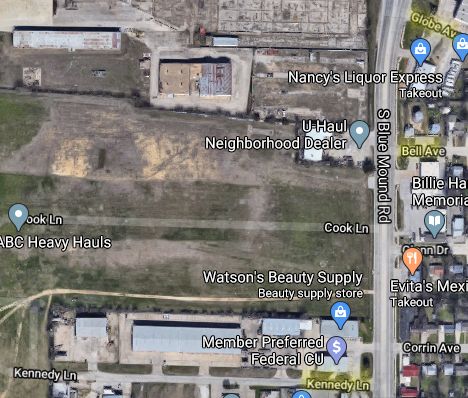 Area street names hint at the site’s history: Globe Avenue, Bell Avenue, Kennedy Lane.
Area street names hint at the site’s history: Globe Avenue, Bell Avenue, Kennedy Lane.
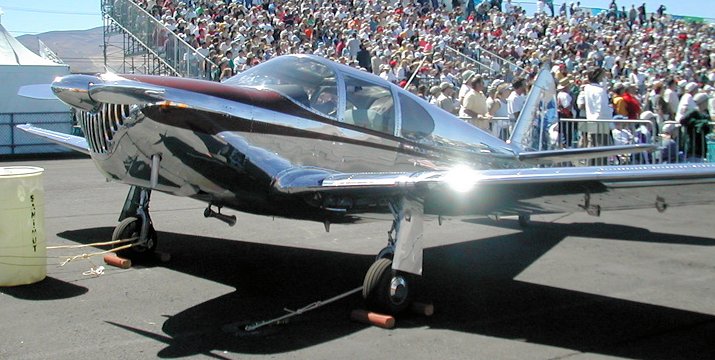 And Kennedy’s Swift airplane lives on. One is on display at the Smithsonian National Air and Space Museum. And others are still in the air: Enthusiasts, with a Swift museum in Tennessee and a national Swift owners club, keep John Kennedy Sr.’s “aristocrat of the airways” flying. (Photo from Wikipedia.)
And Kennedy’s Swift airplane lives on. One is on display at the Smithsonian National Air and Space Museum. And others are still in the air: Enthusiasts, with a Swift museum in Tennessee and a national Swift owners club, keep John Kennedy Sr.’s “aristocrat of the airways” flying. (Photo from Wikipedia.)






Love the info but factually incorrect in a few ways. The biggest is that his name Was John C Kennedy Sr. His name was actually just John Kennedy. I know. I’m His grandson. Anyone who would be interested in more detail, feel free to email me.
Thank you. I have made that correction.